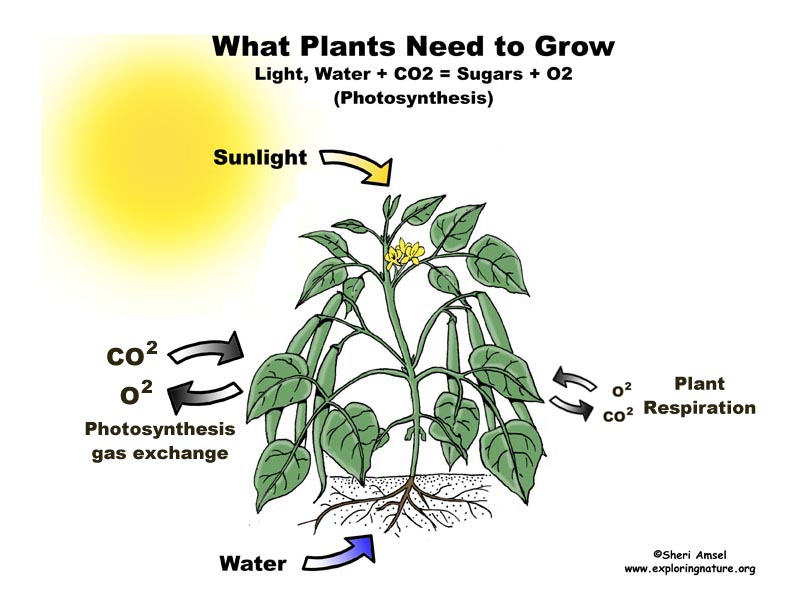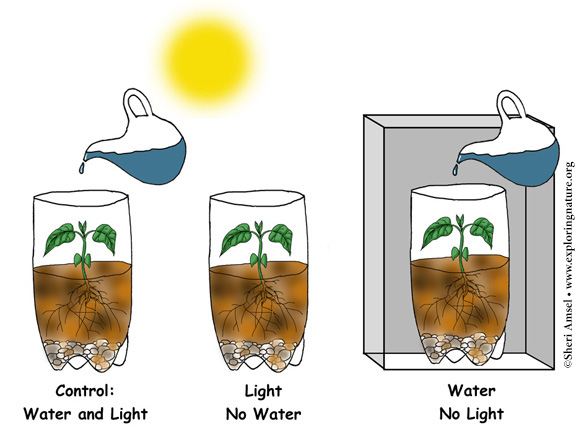

_________________________________________________________________________________________________________________________________________________________
Disciplinary Core Ideas
LS1.C: Organization for Matter and Energy Flow in Organisms
• Plants acquire their material for growth chiefly from air and water. (5-LS1-1)
Performance Expectations Students who demonstrate understanding can:
5-LS1-1. Support an argument that plants get the materials they need for growth chiefly from air and water. [Clarification Statement: Emphasis is on the idea that plant matter comes mostly from air and water, not from the soil.]
_________________________________________________________________________________________________________________________________________________________
Use the Template and Resource Links to Fulfill NGSS
l. Goals:
Essential Questions:
ll. Introductory Activities to Assess Prior Knowledge
A. Simple Activities - that assess students’ understanding of what plants need to grow.
What Living Things Need - Labeling
What Do All Living Things Need? Fill in the Blank
lll. New Knowledge - Text
A. Read about animals that live in groups and consider how this helps them.
Plant Structure - The Parts of a Plant and FlowerB. Examples of Models (depicts the concept expressed in the reading):
Ask students to look at the model of what a plant needs and explain how this works.
Inquiry related to the plant's needs of water and air.
Learning About Plants - Make a Terrarium
Photosynthesis - A Simple Experiment
V. Summarize Knowledge - Enduring Understandings
Vl. Next Generation of Science Standards (NGSS) - Grade 5
Disciplinary Core Ideas
LS1.C: Organization for Matter and Energy Flow in Organisms
• Plants acquire their material for growth chiefly from air and water. (5-LS1-1)
Science and Engineering Practices
Engaging in Argument from Evidence
Engaging in argument from evidence in 3–5 builds on K–2 experiences and progresses to critiquing the scientific explanations or solutions proposed by peers by citing relevant evidence about the natural and designed world(s).
• Support an argument with evidence, data, or a model. (5-LS1-1)
Crosscutting Concepts
Energy and Matter
• Matter is transported into, out of, and within systems. (5-LS1-1)
Performance Expectations
Students who demonstrate understanding can:
5-LS1-1. Support an argument that plants get the materials they need for growth chiefly from air and water. [Clarification Statement: Emphasis is on the idea that plant matter comes mostly from air and water, not from the soil.]
Common Core State Standards Connections
ELA/Literacy
RI.5.1 Quote accurately from a text when explaining what the text says explicitly and when drawing inferences from the text. (5-LS1-1)
RI.5.9 Integrate information from several texts on the same topic in order to write or speak about the subject knowledgeably. (5-LS1-1)
W.5.1 Write opinion pieces on topics or texts, supporting a point of view with reasons and information. (5-LS1-1)
Mathematics
MP.2 Reason abstractly and quantitatively. (5-LS1-1)
MP.4 Model with mathematics. (5-LS1-1)
MP.5 Use appropriate tools strategically. (5-LS1-1)
5.MD.A.1 Convert among different-sized standard measurement units within a given measurement system (e.g., convert 5 cm to 0.05 m), and use these conversions in solving multi-step, real world problems. (5-LS1-1)
When you research information you must cite the reference. Citing for websites is different from citing from books, magazines and periodicals. The style of citing shown here is from the MLA Style Citations (Modern Language Association).
When citing a WEBSITE the general format is as follows.
Author Last Name, First Name(s). "Title: Subtitle of Part of Web Page, if appropriate." Title: Subtitle: Section of Page if appropriate. Sponsoring/Publishing Agency, If Given. Additional significant descriptive information. Date of Electronic Publication or other Date, such as Last Updated. Day Month Year of access < URL >.
Amsel, Sheri. "Grade 5 - 5-LS1 From Molecules to Organisms: Structures and Processes" Exploring Nature Educational Resource ©2005-2024. December 13, 2024
< http://exploringnature.org/db/view/Grade-5-5-LS1-From-Molecules-to-Organisms-Structures-and-Processes >


